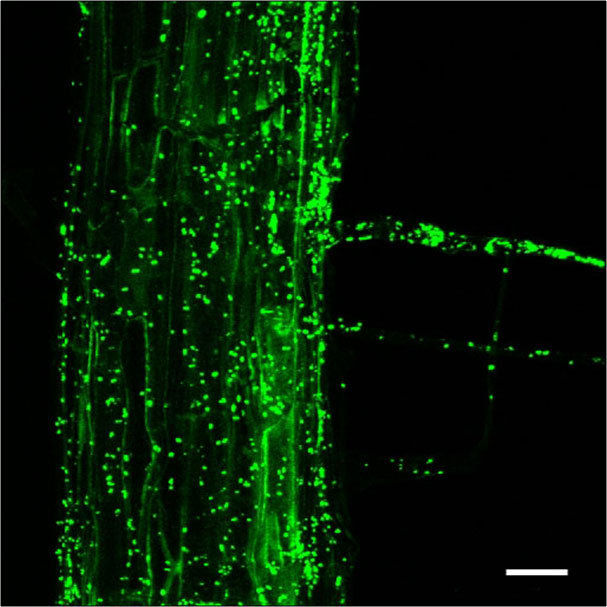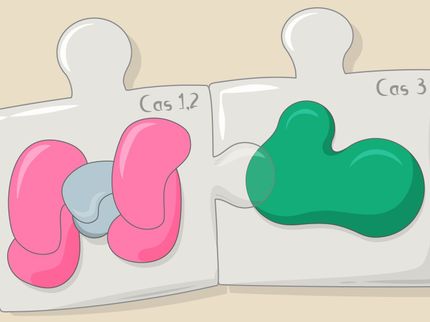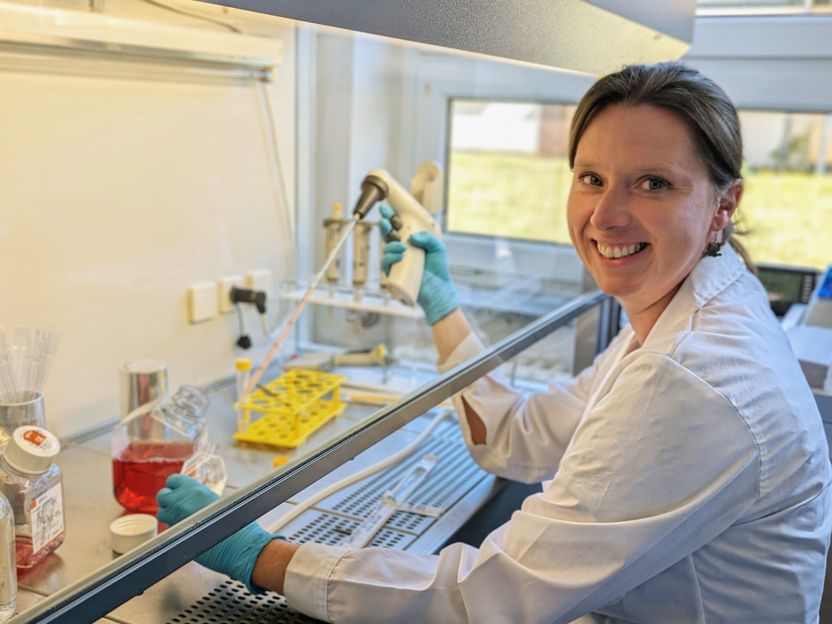Bacterial community inside the plant root
Plants choose the soil bacteria that they allow into their roots
Soil is the most species-rich microbial ecosystem in the world. From this incredible diversity, plants specifically choose certain species, give them access to the root and so host a unique, carefully selected bacterial community from which they then benefit in a variety of ways. To achieve this, the plant's immune system must be able to tell which of these bacteria are friends and which foes. Researchers from the Max Planck Institute for Plant Breeding Research in Cologne and the Max Planck Institute for Marine Microbiology in Bremen have now discovered that the model plant Arabidopsis preferentially takes up three bacterial phyla into its roots: Actinobacteria, Proteobacteria and Bacteroidetes. This community of microbes is dependent on soil type and plant genotype.

Microscope image of a root of an arabidopsis plant with invading bacteria (green).
© MPI for Plant Breeding Research
The scientists have been breaking new ground in plant science with their investigation. It is only in recent years that the significance of microbial communities has been receiving wider attention. Even humans have more microorganisms than cells inside them, which means that any living organism can be regarded as a metaorganism. Schulze-Lefert and his colleagues have conducted acensus of the Arabidopsis root and identified varying quantities of 43 bacterial phyla. It may therefore be concluded that Arabidopsis makes a selection of the inhabitants of its roots from the profusion of microorganisms in the soil.
In drawing up the census, Schulze-Lefert and his colleagues investigated three habitats: root tissue with the bacteria residing there, the rhizosphere directly adjacent to the root, and unplanted soil in the surroundings of the test plants. "Three phyla of bacteria are dominant in the roots", says Schulze-Lefert. "These are Proteobacteria, Bacteroidetes and Actinobacteria, and each of these phyla is represented there by a major class or family. The nature of the soil and the genotype of the particular Arabidopsis plant obviously also have an influence on which bacteria are taken up into the roots."
The researchers cultivated the test plants either in loamy, silty soil from the Cologne Lowland or in sandy soil from the river and lake landscape around Golm in the federal state of Brandenburg. They also investigated two different ecotypes of Arabidopsis, each adapted to a very specific location. The fact that there are differences in the respective microbial communities between the two ecotypes also indicates that the bacteria must be selectively concentrated in the roots. "One of the bacterial species occurs ten times more frequently in one of the ecotypes than in the other", says Schulze-Lefert.
"We of course also wondered whether the community of bacteria has come together in the root merely by chance or whether there actually is a concentration system using molecular ‘admission tickets’, as we suspect", comments Schulze-Lefert on the results. The scientists therefore investigated the distribution pattern of the bacteria, namely which species can only be found on dead organic material, which are primarily present in the roots and which are to be found both on dead material and in root.
The bacteria which only settle on dead material must deliberately be kept at a distance by the plants. Of the three large groups of bacteria, it is primarily the Actinobacteria that predominate in the living root. "There must therefore be a molecular ‘invitation’ for this group", says Schulze-Lefert. "We don't know what it looks like, but the results cannot be explained in any other way. The important question that then arises is how the plant's immune system tolerates the useful bacteria. In other words, how does Arabidopsis tell friend from foe?" Plants are not usually timid when it comes to defending themselves from phytopathogenic bacteria. Pathogenic invaders are quickly recognised from their characteristic patterns and then subjected to the full force of the plant's immune system.
The group of bacteria which are found both on dead material and in the roots are also of interest. After all, this group makes up more than 40 percent of the bacterial community in the root. Schulze-Lefert's Cologne-based team are working on the assumption that these bacteria are primarily adapted for specific parts of the plant cell wall, which are identical in living and dead material, and are attracted by these constituents. A similar selective concentration of specific bacteria in the root is also found when comparing Arabidopsis plants from the wild with greenhouse specimens.





















































